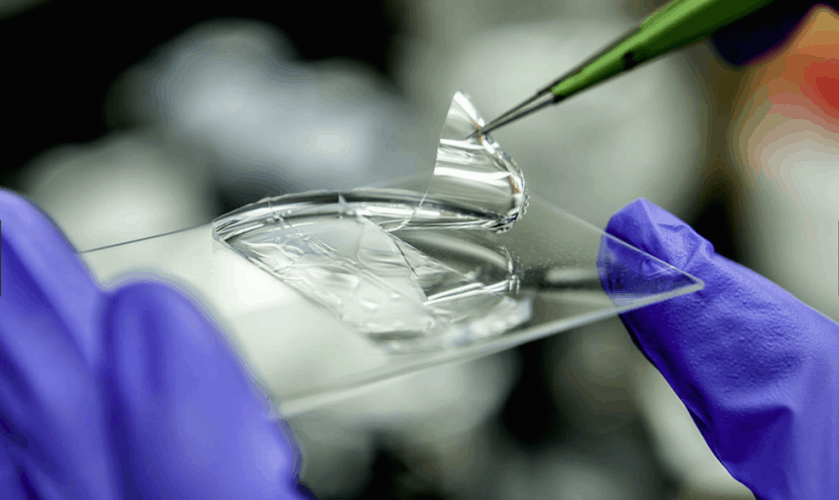The team of chemical engineers at the University of Michigan in Ann Arbor has developed the film to have optical properties that, when combined with a labelling technique, they believe will be able to detect tell tale molecules associated with the early stages of tumour development.

The film, made from polymethylsiloxane (PDMS) treated with layers of a colloidal dispersion of 660nm-diameter gold nanoparticles whose electrons interact with electromagnetic fields, induces a phenomenon called circular polarisation in light passing through it.
Unlike the more familiar plane polarisation, used in sunglasses to block out light reflected from surfaces whose waves are oscillating in one direction, the direction of the waves in circularly polarisation light rotate in a helix as they propagate. The helix can proceed in a clockwise or anticlockwise direction, and stretching the film can alter the 'tightness' of the helix or reverse its direction in a controllable way.
“We used gold nanoparticles for two reasons,” said Yoonseob Kim, a graduate student working on the project. “First, they're very good at polarising the kind of visible light that we were working with. In addition, they're very good at self-organising into the S-shaped chains that we needed to induce circular polarisation.”
The team anticipates that the film could be used in a simplified version of a detection technique that is currently producing promising results but is difficult to carry out. This uses the fact that circular polarisation is rare in nature. Developing cancer cells deposit small but characteristic fragments of protein and DNA into the bloodstream. These can be labelled by adding reflective molecules that respond to circularly polarised light to a small blood sample, and become visible under circularly polarised illumination. These tests, currently still under development, seem very promising for early detection of cancer recurrence, but currently require expensive and large equipment to produce the polarised light.
“More frequent monitoring could enable doctors to catch cancer recurrence earlier, to more effectively monitor the effectiveness of medications and to give patients better peace of mind,” said research leader Prof Nicholas Kotov, who describes the research in an online paper in Nature Materials. “This new film may help make that happen.”
PDMS is a well-known material in industry and is used to make soft contact lenses. The team treated it by twisting a sheet of the material, applying five layers of gold nanoparticles stuck down with clear polyurethane, then untwisted the sheet to produce the S-shaped buckling of the gold chains that induces circular polarisation.
“The film is light, flexible and easy to manufacture,” Kotov said. “It creates many new possible applications for circularly polarised light, of which cancer detection is just one.” He believes the light could also be used for data transmission, or even to bend light around objects to produce an 'invisibility' effect.
For cancer detection, he said, it could be built into a mobile-phone sized device, much cheaper and easier to use the current equipment and incorporating light production and detection, that a doctor could use in the surgery or even in a home visit. Such applications are still some years away, he cautioned.





Poll: Should the UK’s railways be renationalised?
Rail passenger numbers declined from 1.27 million in 1946 to 735,000 in 1994 a fall of 42% over 49 years. In 2019 the last pre-Covid year the number...